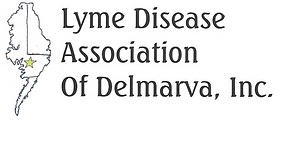Pouring 30+ years of Lyme experience into a novel

by Pamela Andrews
In 1991, my daughter, Leya Schiller, graduated from high school. She had spent the previous several years exploring her special interests: karate, dancing and learning how to become a fashion model.
Graduation from modeling school was celebrated with a fashion show at the historic DuPont Hotel in Wilmington, Delaware. During the final march on an elevated runway, all the models showed their favorite outfits while walking down the runway in time with the Buster Poindexter song, “Hot, Hot, Hot.”
Leya turned on her dancing skills and stole the show! The audience loved it. They clapped in time to the music as she gyrated her body down the runway. They gave her a loud ovation at the end. I was so proud of my somewhat shy daughter stepping forward and displaying her dancing ability — so full of life, energy and joy.
Mystery symptoms
One day soon, however, everything changed. Leya became quite ill, with high fevers, vomiting, diarrhea, and body-wide pain. Her primary care physician, Dr. D, said Leya had a bad case of the summer flu and that she just needed to rest.
As days went by, Leya didn’t get better. I called her doctor numerous times to ask for his advice. Once over the phone, Dr. D shouted at me, “Stop being hysterical! She’s going to be fine!” Then he hung up.
Leya was never “fine” again. She got over the acute phase of “the flu,” but over the next several months she went to her doctor, again and again, as her list of symptoms grew. Dr. D did a number of tests and when none of them showed positive results, he declared that Leya was making it all up and she was mentally ill.
I understood Leya would recover her health only if we found the true cause. I arranged an appointment with a well-known psychiatrist, who spend two days evaluating Leya. He met with us to share his results: Leya was not mentally ill. He felt sure the root cause of her many health issues was a physical illness. His advice: “Keep going! You have to find the real cause.”
Over the next couple years, as one of Leya’s body systems after another failed, she went to 13 doctors and three different medical institutions. None of those doctors could determine why Leya was sick. They each did tests, but none for tick-borne diseases. We heard various versions of “blame the patient.”
I researched to find a good diagnostician and determined Leya should see a doctor in Baltimore. His office said his next available appointment was in six months. “Leya may not live for another six months,” I said. Her weight was down to 90 pounds. They told me that a new associate in their office, Dr. C, was available in two weeks. I said, “We’ll be there!”
False negatives
Dr. C gave Leya IV treatments with a cocktail of vitamins which helped her for a couple weeks, then she would crash again. Dr. C ordered the ELISA Lyme disease test. At her next appointment, Dr. C considered the test results. “I can hardly believe these test results. They indicate Leya doesn’t have Lyme, yet her symptoms are classic Lyme disease!”
At that time, it was not known that ELISA Lyme tests often gave false negative results. Negative test results meant no treatment for Lyme. “Don’t worry, Leya. I don’t know what’s making you so sick, but we’ll keep going until we find answers,” Dr. C said.
In 2000, Dr. C’s associate ordered a new test, the Lyme western blot test, which came back a high positive. We rejoiced! We finally knew what disease we were fighting. Thus began years of treatments: oral antibiotics, IV antibiotics, antibiotic injections, biofilm busters, herbals and probiotics. Her doctor warned me that Leya would feel worse as we began treatment because of Herxheimer reactions. He also acknowledged that Leya probably sustained permanent organ damage by having tick-borne diseases, undiagnosed and untreated for nine years.
In January 2003, a Lyme doctor was coming to our city to give a talk on tick-borne diseases. I attended the event and was surprised that the venue, designed for 300 people, had a standing-room audience. Obviously, my daughter’s Lyme disease was not an isolated case of her bad luck. I spoke to the couple who had arranged the event and suggested we should organize a Lyme disease group.
Banding together to support Lyme patients

My personal education in tick-borne diseases began in 2003, as I was also diagnosed with Lyme disease. Strangely, this was a blessing of sorts because I found out, firsthand, that Leya had not been exaggerating her many symptoms.
What should I do with these 33 years of experience and research on Lyme disease? I decided to write a novel. LYME WARS – A Love Story exposes the challenges faced by Lyme patients when interacting with the medical community. It also portrays the emotional devastation chronic tick-borne diseases impose on romantic and family relationships, and friendships. While some of the scenes in my novel are based upon actual events, the characters are fictitious. This is not the story of Leya’s life, nor mine.
LYME WARS – A Love Story tells the story of a healthy, talented, happy young couple who are challenged when their lives are impacted by tick-borne diseases. This novel is dedicated to patients of tick-borne diseases who have, like my daughter, faced difficult lives with tenacity and perseverance. I hope this novel speaks for you and to you. My heart is with all of you.
Click here to learn more about the book.
Delmarva is a peninsula on the East Coast of the US that incorporates parts of Delaware, Maryland, and Virginia. Learn more about the group at delmarvalyme.org.





















We invite you to comment on our Facebook page.
Visit LymeDisease.org Facebook Page